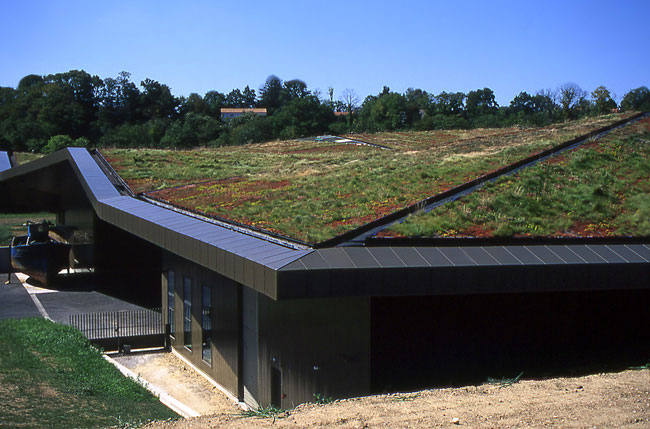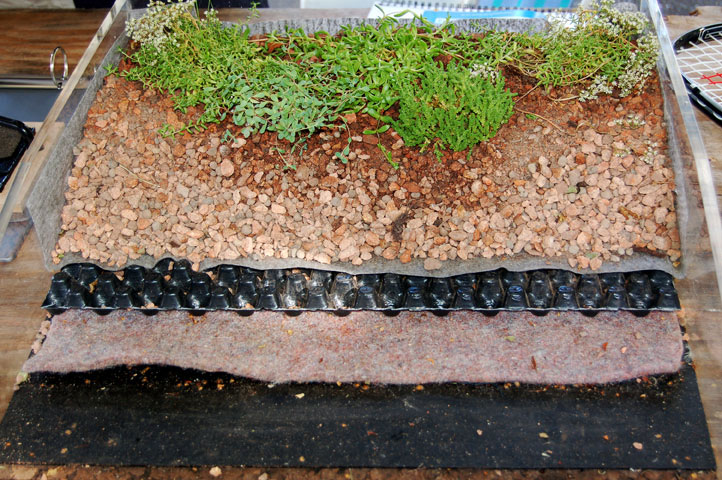
Why green roofs?
Few other building systems provide the range of benefits that green roofs can. They insulate buildings against noise and temperature fluctuations, reducing the building's reliance on active heating and cooling. Green roofs also protect the roof membrane from exposure to the elements and can dramatically extend the life of a roof.
Growing plants absorb carbon dioxide from the atmosphere and release oxygen and moisture as they grow. This both purifies the air and cools temperatures around the building. This is particularly important in urban areas, where hard surfaces absorb heat from the sun and radiate it back out into the environment, contributing to higher city temperatures.
Green roofs slow down and clean stormwater. By incorporating soil and plants onto the roof tops, the green roof absorbs stormwater and slowly releases it back into the environment, helping to prevent flooding.
Removing vegetation for buildings also affects biodiversity. By replacing traditional roofing materials (tiles, bitumen, concrete) with a green roof it provides habitat, shelter and food that supports biodiversity. Green roofs have one other important contribution to make – they make us feel good. There is an increasing body of research that shows that being in and around living (green) systems improves our sense of wellbeing and makes us feel mentally and physically better.

Example of Green Roof Construction
What to consider when building a green roof
How do you want to use your green roof?
Do you want to walk on your roof or just have it look beautiful? If the roof isn't going to be walked on, you can get away with shallower soils (15-30cm) and grow ground covers and plants that don't need a lot of soil to thrive. If you want an area to walk and play on or to grow food, deeper soils will be needed (greater than 30cm). Whether the roof will be actively used or not, consideration needs to be given to the ease of access for installation and ongoing maintenance. If the roof will be actively used, design features may need to be included such as balustrades that make it safe to be on the roof, and provide adequate privacy for you and your neighbours.Read the complete article
The complete version of this article, which was written by Dr Chris Reardon of Sunteth Design, is part of the book entitled "How to rethink building materials".
How to rethink building materials can be purchased online as a hard copy or soft copy.
The remaining sections of the article cover the following topics:
- How much sun and rain the roof get will get
- Waterproofing
- Soil, water and plants
- Materials used to construct a Green Roof
Considering the site
Table of contents - "How to rethink building materials"
- Part 1 Overview: What it's all about
- 1.01 Creating sustainable change - Barriers to getting the message through.
- 1.02 Choosing materials from an early design stage - Questions to ask at the beginning of a project.
- 1.03 Managing change - How to avoid the downside of the building industry's inherent aversion to risk.
- Part 2 Forethought: A look at the issues behind the choices we make
- Part 3 Planning: Unfamiliar but essential considerations
- Part 4 The Great Debates: Contested ideas about material impacts
- Part 5 Uncommon Solutions: The fast-approaching horizon
- Part 8 A-Z of Building Materials
